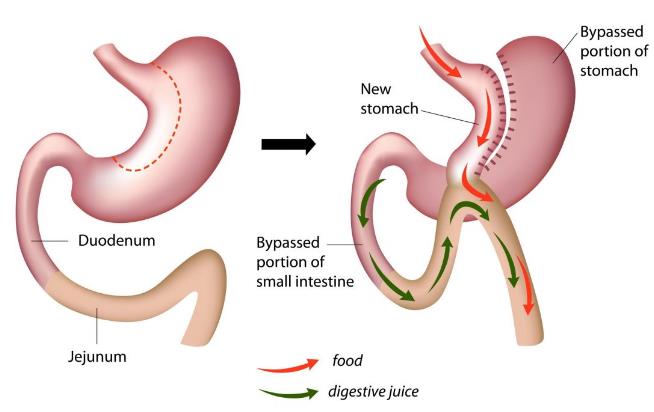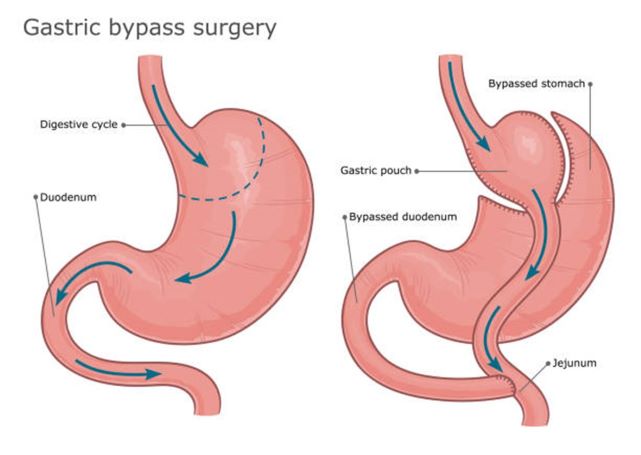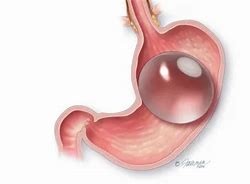Types of weight loss surgery
One Anastamosis Gastric Bypass (OAGB/Mini Bypass)
The OAGB is s a procedure to create a pouch (longer pouch than the RYGB) to reduce the size of your stomach. It works by decreasing the amount of food you can eat at one sitting and by altering the gut hormones that affect appetite and satiety (feeling full). It combines some of the properties of the Roux-en-Y gastric bypass (RYGB) and the Sleeve Gastrectomy

Roux-en-Y Gastric Bypass (RYGB)
The gastric bypass is a procedure to create a small pouch to reduce the size of the stomach. This pouch will hold about 15-50mls and about the size of a boiled egg. Initially, it will hold only tiny amounts of food or liquid – probably less than an egg cup to start with. Part of your gut (small intestine) will also be bypassed. This means that food will no longer enter the first part of your intestines so will not be digested and absorbed in the normal way. You will feel fuller for longer, due to the effect the operation has on your gut hormones. As a result of all of these you will lose weight

Sleeve Gastrectomy
Your stomach is stapled to make it much smaller and left with a sleeve shape stomach (about the size of a small banana). If you had a sleeve gastrectomy, about three quarters of your stomach will be removed. This will fill up quickly, restricting the amount of food you can eat Once food passes out of the small stomach it is digested in the normal way

Intragastric Balloon
The gastric balloon procedure is recommended for people who need to lose weight before having a weight-loss operation, to reduce their surgical risk, or who can’t have surgery for health reasons. A deflated soft silicone sack (balloon) is placed through the mouth and oesophagus (food pipe). The balloon is then filled with a blue liquid, which is designed to partially fill your stomach, giving you a feeling of fullness. This will help you to change your eating pattern, reduce the volume of food eaten, and make you feel full quicker. The balloon is designed to stay in place for a maximum of twelve months, after which it must be removed in a very similar way as to how it was inserted


















